#Edward J. Steichen
Text
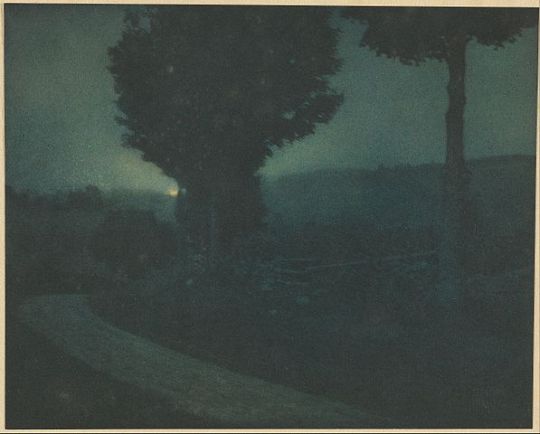
Edward J Steichen, Road into the Valley-Moonrise, 1904
more
677 notes
·
View notes
Text

Edward Steichen (American, b. Luxembourg, 1879–1973) ~ Delphiniums, ca. 1940. Dye imbibition print. | Eastman museum
view more on wordPress
Edward Steichen: painter, photographer, modern art promoter, museum curator, exhibition creator—and delphinium breeder. Yes, in addition to his groundbreaking career as a visual artist and museum professional, Steichen was also a renowned horticulturist. While he lived in France, he served as president of the American Delphinium Society from 1935 to 1939. In the early 1930s, after leaving his position as chief of photography for the Condé Nast publications—including Vogue and Vanity Fair—and more than 10 years before beginning his career as Director of the Department of Photography at MoMA, he retired to his farm to (…)

Edward Steichen with delphiniums (ca. 1938), Umpawaug House (Redding, Connecticut). Photo by Dana Steichen. Gelatin silver print. Edward Steichen Archive. | MoMA blog
#blue flowers#blumen#dana steichen#delphinium#delphiniums#Dye imbibition print#early color photography#early color#early colour#Edward J. Steichen#Eduard Jean Steichen#Edward Steichen#1930s#fiori#flora#flowers#fleurs
274 notes
·
View notes
Text
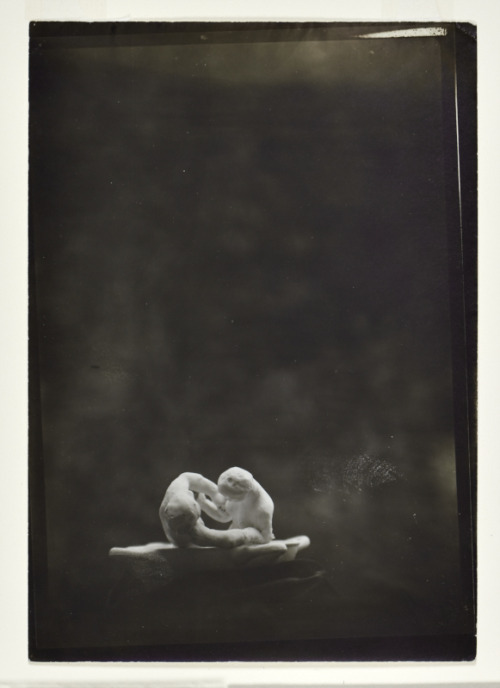

Edward J. Steichen (1879- 1973). Plaster Cast of "A Couple in a Small Turn", 20th. c.
174 notes
·
View notes
Text

Edward J Steichen,
A Bee on a Sunflower, 1920
57 notes
·
View notes
Text


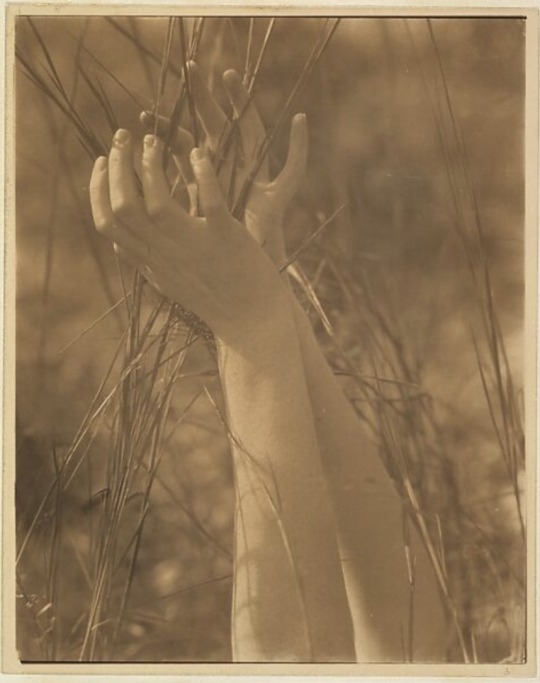
lord byron, "when we two parted" | phoebe bridgers, "scott street" | edward j. steichen, "dana's hands and grasses, long island, new york" (1923)
#words#art#web weaving#lord byron#phoebe bridgers#on shame#on relationships#photography#edward j steichen#my stuff
10 notes
·
View notes
Text

ca. 1904
3 notes
·
View notes
Photo

Edward J. Steichen, "Charles Laughton"; gelatin silver print [1935]
14 notes
·
View notes
Text

Edward J. Steichen (1879-1973), The Flatiron, 1904.
0 notes
Text

This young crewman of a US Navy “Dumbo” PBY rescue mission has just jumped into the water of Rabaul Harbor to rescue a badly burned Marine pilot who was shot down while bombing the Japanese-held fortress of Rabaul.
Since Japanese coastal defense guns were firing at the plane while it was in the water during take-off, this brave young man, after rescuing the pilot, manned his position as a machine gunner without taking time to put on his clothes. A hero photographed right after he’d completed his heroic act. Naked.
The photo was taken by Horace Bristol (1908-1997). In 1941, Bristol was recruited to the U.S. Naval Aviation Photographic Unit, as one of six photographers under the command of Captain Edward J. Steichen, documenting World War II in places such as South Africa, and Japan.
He ended up being on the plane the gunner was serving on, which was used to rescue people from Rabaul Bay (New Britain Island, Papua New Guinea) when this occurred. In an article from a December 2002 issue of B&W magazine he remembers: “…we got a call to pick up an airman who was down in the Bay.
304 notes
·
View notes
Text

Edward J Steichen, A Bee on a Sunflower, 1920
Gelatin silver print
10 notes
·
View notes
Text

Edward Steichen , Mountain of the Crouching Lion, 1916
468 notes
·
View notes
Text

Edward J. Steichen :: Untitled / Nun in Light, ca. 1930. Swann Galleries. Courtesy Alan Griffiths / Luminous-lint: LL/52267 & LL/28821
#edward jean steichen#edward steichen#edward j. steichen#nun#veiled women#1930s#1920s#portrait#nun in light#portraiture#Bildnis
210 notes
·
View notes
Text
What Was So Special About Greta Garbo?
An enigma onscreen and off, the actress only magnified her celebrity by suddenly renouncing it.
By Margaret Talbot
December 6, 2021
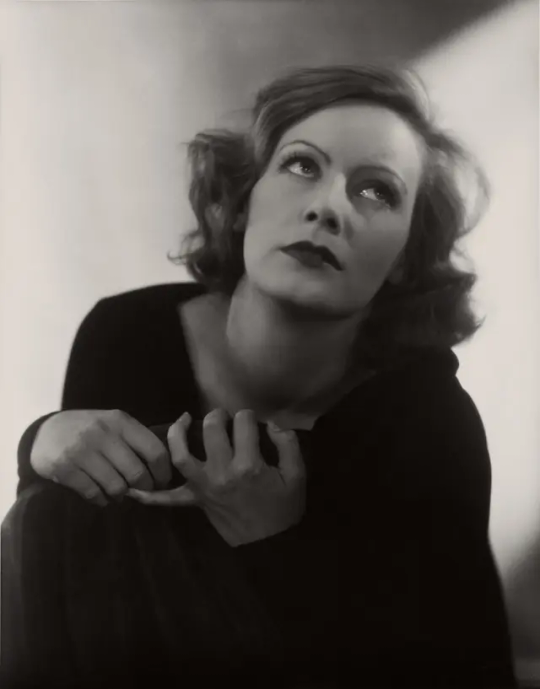
“If only once I could see a preview and come home feeling satisfied,” Garbo said.Photograph by Edward Steichen © 2021 The Estate of Edward Steichen / ARS, courtesy the George Eastman Museum
Fame is so powerful that renouncing it can seem like the supreme power move. Celebrities who retreat from the public eye (Howard Hughes, J. D. Salinger, Prince) will always be legends, no matter what else they may be. Rumored comebacks tantalize. Paparazzi circle. The mystery deepens. In 1941, at the age of thirty-six, Greta Garbo, one of the biggest box-office draws in the world, stopped acting and, though she lived for half a century more, never made another film. For a star who, more than any other, “invaded the subconscious of the audience,” as Robert Gottlieb writes in his new biography, “Garbo” (Farrar, Straus & Giroux), this was an abdication, a privilege of monarchical proportions. But it was also a decision made by one particular, peculiar person who had never been temperamentally suited to celebrity in the first place. There was a reason, beyond the exertions of the Hollywood publicity machine, that a single line she uttered in one movie—“I want to be alone”—became so fused with her image. What can look like a strategy for keeping the public interested can also be a sincere and committed desire to keep it at bay.
Few other performers have ascended as quickly to mononymic status as Garbo did—she started off the way most of us do, with a first and last name, but the first soon fell away, like a spent rocket booster, in the ballyhoo surrounding her. When she appeared in her first sound picture, “Anna Christie,” the ads proclaimed, “Garbo talks!”; for her first sound comedy, “Ninotchka,” it was “Garbo laughs!” Quite why she became such a phenomenon is a puzzle to which film critics and biographers keep returning. Garbo made only twenty-eight movies in her lifetime. (By comparison, Bette Davis made close to ninety, and Meryl Streep has made nearly seventy and still counting.) That slender output could be part of the mystique, compounded by her disappearing act. But Garbo had acquired an enigmatic mythos even before she ended her career—the Hollywood colony treated her like royalty. Nor has it seemed to matter that only a handful of her movies are much watched or admired today.
What Garbo had to offer, above all, was her extraordinary face, at a time when the closeup, with its supercharged intimacy, its unprecedented boon to the emotional and erotic imagination, was still relatively new. Many of the shots credited as the first closeups were unlikely to have set hearts aflame, since they were often of objects—a shoe, a wrench. But filmmakers soon grasped the centripetal seductions of the human face in tight focus. The screenwriter and director Paul Schrader picks as a turning point the moment in a D. W. Griffith film from 1912, “Friends,” in which the camera comes in tight on Mary Pickford’s face, revealing her ambivalence about which of two suitors she should choose. “A real close-up of an actor is about going in for an emotional reason that you can’t get any other way,” Schrader writes. “When filmmakers realized that they could use a close-up to achieve this kind of emotional effect, cameras started coming in closer. And characters became more complex.”
A face as beautiful as Garbo’s—the enormous eyes and deep-set lids, the way love or tenderness or some private, unspoken amusement unknit her brows in an instant, melting her austerity—was almost overwhelming when it filled the screen. She belonged, as Roland Barthes wrote, “to that moment in cinema when the apprehension of the human countenance plunged crowds into the greatest perturbation, where people literally lost themselves in the human image.” This is not to diminish her craft as an actress. But her acting was perhaps most effective in her silent films or in nonverbal scenes in talking pictures in which her face is the canvas for emotion. In the famous last shots of “Queen Christina” (1933), Garbo’s androgynous Swedish ruler stands at the prow of a ship bearing her away from her country; the body of her lover, killed in a duel over her, is laid out on the deck. Garbo stares into the distance, her face a kind of mask but no less eloquent for it. The film’s director, Rouben Mamoulian, had told her that she must “make her mind and heart a complete blank,” empty her face of expression, so that the audience could impose whatever emotions they wanted on it. The scene would then be one of those “marvelous spots,” he said, where “a film could turn every spectator into a creator.”
She was skilled at inciting such projection. More than one contemporary in Hollywood noted that her magic truly showed up only on celluloid, like a ghostly luminescence undetectable until the film was developed. Clarence Brown, who directed Garbo in seven films, recalled shooting a scene with her, thinking it was fine, nothing special, then playing it back and seeing “something that it just didn’t have on the set.” On her face, he said, “You could see thought. If she had to look at one person with jealousy, and another with love, she didn’t have to change her expression. You could see it in her eyes as she looked from one to the other.” Garbo herself, with a kind of arch, adolescent indifference, never wanted to look at the rushes. According to Brown, she’d watch only when sound pictures were played in reverse: “That’s what Garbo enjoyed. She would sit there shaking with laughter, watching the film running backward and the sound going yakablom-yakablom. But as soon as we ran it forward, she wouldn’t watch it.”
Much has been written about Garbo over the years, but Gottlieb, a former editor of this magazine, has produced a particularly charming, companionable, and clear-eyed guide to her life and work—he has no axe to grind, no urgent need to make a counterintuitive case for her lesser movies, and he’s generous with his predecessors. By the end of the biography, I felt I understood Garbo better as a person, without the aura of mystery around her having been entirely dispelled—and, at this point, who would want it to be?
The actress who came to embody a kind of unattainable elegance, who would someday wear sumptuous period costumes with a grace so offhand that they might have been rumpled p.j.’s, grew up in a cramped apartment with no indoor plumbing, in one of Stockholm’s most impoverished neighborhoods. She was born Greta Lovisa Gustafsson on September 18, 1905, to parents from rural stock. Her mother was, in Gottlieb’s description, “practical, sensible, undemonstrative”; her father, an unskilled laborer, was handsome, musical, and fun, and Greta adored him. But he was stricken by kidney disease, and Greta, the youngest of three children, made the rounds of the charity hospitals with him. “She never forgot the humiliations they endured as poor people in search of live-or-die attention,” Gottlieb writes. She was fourteen when he died, and she dropped out of school, leaving her with a lasting embarrassment about her lack of formal education. She went to work to help support the family, first at a barbershop, where she applied shaving soap to men’s faces, then at a department store, where she sold and modelled hats. She said later that she was “always sad as a child for as long as I can think back. . . . I did some skating and played with snowballs, but most of all I wanted to be alone with myself.”
Alongside her shyness and her penchant for solitude, Greta harbored a passionate desire to be an actress. As a kid, she’d roam the city by herself, looking for theatres where she could stand at the stage door and watch the performers come and go. The first time Garbo was in front of the camera was at age fifteen, in an advertising film for the department store that employed her. Sweden had a thriving film industry, and she soon quit her day job to appear in a couple of movies. At Stockholm’s Royal Dramatic Theatre, to which she was accepted at seventeen, the young actors were instructed in a system that “scientifically” analyzed the semiotics of movement and gesture. Remarkably, some of her lecture notes from that time survive—she jotted down that “the head bent forward equals a mild concession” or a “condescending attitude,” and that “the throwing back of the head” conveys “a violent feeling such as love.” Barry Paris, an earlier biographer whom Gottlieb cites approvingly, notes that “Garbo in silent films would employ that system of gestural meaning to a high degree.” She did so in her sound pictures as well. When she plays the Russian ballerina in “Grand Hotel” (1932), her body language is jittery, neurotic. Depressed, she lets her head droop as if it were simply too heavy to hold up; surprised by delight at the prospect of a romance with John Barrymore’s gentleman jewel thief, she tosses her head back at giddy angles. It might have been laughable, but instead it’s riveting.
In the spring of 1923, the gifted film director Mauritz Stiller approached the Stockholm theatre looking for actresses to cast in his new movie, an epic based on a Swedish novel, “The Story of Gösta Berling.” Stiller came from a Jewish family in Finland; orphaned young, he had fled to Sweden to avoid being conscripted into the tsar’s Army. Garbo and he were never lovers—Stiller preferred men—but their relationship was perhaps the most important in both of their lives. With his commanding height, his taste for luxury (full-length fur coats, a canary-yellow sports car), and his domineering style with actors, he had more than a touch of the Svengali. But Stiller believed in Garbo at a time when, as one veteran actress put it, Greta was “this little nobody . . . an awkward, mediocre novice,” and he loved her. (He also seems to have been the one who suggested replacing “Gustafsson” with “Garbo.”)
When Hollywood came calling—in the form of Louis B. Mayer scouting European talent for M-G-M—it wasn’t clear whether Stiller was the lure or Garbo; the director was certainly better known. In any case, Stiller made sure that they were a package deal (and, Gottlieb adds, later upped Garbo’s pay to four hundred dollars a week, an “unheard of” salary for an untested starlet). The two sailed for the United States in 1925, arriving in the pungent heat of midsummer New York. (Garbo’s favorite part of the visit seems to have been the roller coaster at Coney Island.) Then it was on to Hollywood by train.
The studio moguls gave an unknown such as Garbo a very short runway. M-G-M signed up the Swedish girl for two pictures, “Torrent” and “The Temptress,” and, as the film historian Robert Dance writes in his smart new book, “The Savvy Sphinx: How Garbo Conquered Hollywood” (Mississippi), “if those first two films were unsuccessful financially M-G-M would not renew her contract for a second year.” As it happened, both were hits. Motion Picture was among the industry outlets declaring her début “a complete success.” (“She is not so much an actress as she is endowed with individuality and magnetism,” it said.) Garbo became a fan favorite, even though she was almost uniquely averse to the kind of goofy stunts and mildly salacious photo shoots that other stars put up with. When she got to be as famous as Lillian Gish, she told one interviewer early on, “I will no longer . . . shake hands with prize-fighters and egg-and-milk men so they will have pictures to put in the papers.” Instead, she worked with consummate portrait photographers who lit her gloriously. Eventually, her films were earning enough that she was able to negotiate an unusual contract, one that gave her the right to veto scripts, co-stars, and directors. And she shunned interviews so consistently that in the end her privacy became its own form of publicity.
Despite such badassery, she never really adjusted to her new country or her new destiny, at least beyond the movie set. What looked like carefully cultivated hauteur was partly the product of awkwardness, disorientation, and grief. She hardly spoke English when she first arrived, and, within a year, she learned that her beloved sister, an aspiring actress herself, had died back home. Stiller did not make a smooth adjustment to Hollywood and, in a blow to them both, he was not chosen to direct Garbo’s first American picture. Garbo wrote to a friend in Sweden about how miserable she was: “This ugly, ugly America, all machine, it is excruciating.” The only thing that made her happy, she claimed, was sending money to her family. At a young age, Gottlieb writes, she found herself “trapped in a spotlight extreme even by Hollywood standards,” and with no psychological preparation for grappling with the kind of fame—movie stardom—that was new not just to her but to the world.
Athletic and physically restless, she soon took up the long nighttime walks that became a refuge; with her hat pulled low over her head, as it customarily was, she would have been hard to recognize. Stiller, who probably felt that his young protégée no longer needed him, returned to Sweden, where he died in 1928, at the age of forty-five, reportedly clutching a photograph of her. “He never seems to have resented her dazzling ascent to fame,” Gottlieb writes, “only wanting her to be happy and fulfilled.” Back in Sweden to mourn him, Garbo went with his lawyer to the storehouse containing his possessions, where she walked around touching his belongings and murmuring about her memories. Gottlieb says that this episode must surely have been an inspiration for the scene in “Queen Christina” in which Garbo’s character moves around a room at an inn, touching all the inanimate reminders of the lover she will never spend another night with. On sets, she would sometimes talk softly to herself about what her mentor might have told her to do—one director she worked with referred to Stiller as “the green shadow.”
Garbo appears to have been emotionally stunted in certain ways, damaged by the loss of her father, her sister, and Stiller, abashed by the limitations of her English and her education. Though she had a sense of humor, she emerges in Gottlieb’s portrait as prickly, stubborn, and stingy. The sudden onslaught of celebrity made her more so. She never married, had children, or apparently wanted to do either; she had brief romantic relationships, mostly with men (the actor John Gilbert, probably the conductor Leopold Stokowski), and likely with women, too (the leading candidate seems to have been the writer Mercedes De Acosta, the “ubiquitous lesbian rake,” in Gottlieb’s words, who had affairs with Marlene Dietrich and many others). Her longest-lasting relationships were with friends, especially, as Gottlieb makes clear, those who helped her logistically, advised her devotedly, and steadfastly refused to spill the tea about her. In these, she had pretty good, if not unerring, taste. Probably the closest and most enduring friendship was with Salka Viertel, the intellectually vibrant woman at the center of L.A.’s remarkable community of refugee writers, composers, and filmmakers from Germany.
From the start of her Hollywood career in silent pictures, Garbo was often cast as a vamp—the kind of man-eater who shimmied and inveigled and home-wrecked her way through so many nineteen-twenties movies. (See the entire career of Theda Bara.) As Robert Dance notes, “Adultery and divorce were catnip to post World War I audiences.” The parts quickly bored her: “I cannot see any sense in dressing up and doing nothing but tempting men.” Off the job, she eschewed makeup and liked to dress in slacks, men’s oxford shoes, and grubby sweaters. Her closet was full of men’s tailored shirts and ties. She often referred to herself as a “fellow” and sometimes signed her letters “Harry” or “Harry Boy.” The movie role she seems to have liked best was the learned cross-dressing seventeenth-century monarch Christina; it allowed her to stride around in tunics, tight-fitting trousers, and tall boots, to kiss one of her ladies-in-waiting full on the lips, to declare that she intended to “die a bachelor!” (As plenty of gender-studies scholars will tell you, this is one queer movie.) She expressed a longing to play St. Francis of Assisi, complete with a beard, and Oscar Wilde’s vain hero Dorian Gray. In today’s terms, Garbo might have occupied a spot along the nonbinary spectrum. Gottlieb doesn’t press the point, but remarks, “How ironic if ‘the Most Beautiful Woman in the World’ really would rather have been a man.”
Her third American film, “Flesh and the Devil” (1926)—the ultimate nineteen-twenties title—transformed her into an international star. It’s about a love triangle involving two best friends, played by the magnetic John Gilbert and the handsome Swedish actor Lars Hanson, with Garbo at its apex. It, too, is a pretty queer movie, though it seems less in control of its signifiers than, say, “Queen Christina.” As Gottlieb points out, the two male leads are forever clasping each other fervently, bringing their faces close together, as if about to kiss. (It heightens the vibe that, in silent-movie fashion, Hanson appears to be wearing lipstick some of the time, and Gilbert eyeliner.) “Flesh and the Devil” also features some of the most erotic scenes I’ve ever encountered on film. There’s one, in a nighttime garden, in which Garbo rolls a cigarette between her lips, then puts it between Gilbert’s, her eyes never leaving his, as he strikes a match and illuminates their gorgeous, besotted faces. There’s one where she lies back in sensual abandon on a couch, Gilbert’s head lolling against her lap, and he lifts her hand and drags her fingers across his mouth. And then there’s my favorite: she and Gilbert are at a Communion rail in church. By now, Gilbert’s character has killed her first husband in a duel, and she has married the other friend, but they’re still crazy about each other, natch. Gilbert sips from the chalice just before she does, and, when the priest hands it to her, she turns it around to drink greedily from the side her lover’s lips have just touched. Her expression is one of slow-burn ecstasy.
Gilbert and Garbo fell in love while they were making the movie, but their story is a sad one, mainly because Gilbert is a sad figure. He is often offered up as an example of an actor who couldn’t make the transition to sound—his voice was said to have been too reedy or something. That turns out to have been an urban legend: his voice was fine. The trouble was that he was best at playing boyish men undone by love at a time when, as Gottlieb observes, Depression-era Hollywood was more into “gangsters, snappy dialogue, musicals.” Garbo and Gilbert lived out a “Star Is Born” trajectory. When they made “Flesh and the Devil,” he was a big-name actor at the height of his powers, and he helped Garbo by making sure the camera angles were right for her and each take of her was the best it could be. One story is that he planted a stand of trees on his property in the Hollywood Hills to remind her of the woods in Sweden, and he apparently proposed to her repeatedly. (She professed herself puzzled that she kept refusing a more permanent bond, but she did.) By the time she made “Queen Christina,” in 1933, she had top billing, and she insisted that Gilbert, who was then married to someone else, and professionally on the skids, play her romantic interest—rejecting the studio’s choice, a young Laurence Olivier. Gilbert later remembered that she was tactful and considerate with him on the set, though he was drinking heavily, throwing up blood, and nervous about his performance. “It is a rare moment in Garbo’s history,” Gottlieb writes, “when we can fully admire, even love her, as a human being, not only as an artist.” Gilbert died three years later, at the age of thirty-eight. Garbo was characteristically unsentimental. “Gott, I wonder what I ever saw in him,” she remarked while he was still alive. “Oh well, I guess he was pretty.”
Why did Garbo stop acting? It wasn’t as though her star was truly on the wane. It had been years since she’d made her successful transition to talkies, with a dialogue-heavy adaptation of Eugene O’Neill’s “Anna Christie.” (From the moment she uttered her first lines, “Gimme a whiskey—ginger ale on the side—and don’t be stingy, baby,” her accent proved to be a sexy asset.) She’d been nominated for four Best Actress Oscars. In 1939, she’d made “Ninotchka,” the romantic comedy in which she played a Soviet apparatchik on a mission to Paris who falls in love with a playboy count and discovers, as the pitch for it went, “capitalism not so bad after all.” It was a huge hit—more than four hundred thousand people went to see it at Radio City Music Hall during a three-week run, Gottlieb says. Garbo is very funny, deadpanning her way through the first half of it in boxy jackets, rationally assessing Melvyn Douglas’s charms. (“Your general appearance is not distasteful.”) As one biographer, Robert Payne, wrote, the performance worked so brilliantly because it satirized “Garbo herself, or rather her legend: the cold Northerner immune to marriage, solemn and self-absorbed.”
The next and last movie she made, “Two-Faced Woman,” a clumsy attempt to re-create comedy magic with Douglas, was a turkey, but she could surely have survived it. Instead, she considered projects that fell through, turned down others (offered the female lead in Hitchcock’s “The Paradine Case,” Gottlieb writes, she is supposed to have sent her agent a telegram saying “no mamas. no murderers”), and slowly drifted away from the business of moviemaking. She had never liked the limelight and, Gottlieb says, lacked the relentless drive that animated contemporaries such as Marlene Dietrich or Joan Crawford. She doesn’t seem to have been particularly vain about her beauty, but she was practical enough to know its precise value, and to anticipate the cost of its fading. And, though she seems to have enjoyed acting, she was never satisfied with the results. “Oh, if once, if only once I could see a preview and come home feeling satisfied,” she remarked after one film screening. Garbo was no Norma Desmond, viewing her old films over and over to admire her own image. Screening some of them years later, at moma, Barry Paris reported, she got a kick out of imitating herself: “R-r-rodney, when will this painful love of ours ever die?” She once told the actor David Niven that she’d quit because she had “made enough faces.” The analysis was typical of her—unreflective, cryptic, deprecatory.
She was, Tennessee Williams thought, “the saddest of creatures—an artist who abandons her art.” Yet Garbo doesn’t seem to have seen herself that way. Perhaps attuned to the perils of growing old in Hollywood, she moved to New York, to an apartment on the East Side, spent long stretches of time in Europe with friends who were wealthy or witty or both, went to the theatre, collected a bit of art. She did not reinvent herself as a memoirist or a philanthropist (though her estate was valued at roughly fifty million dollars when she died, in 1990) or an ambassador of any sort of good will. People loved the mystery of it all; photographers were always chasing after her. But she wasn’t in hiding; she got out. One wag called her a “hermit about town.”
Did Garbo have a rich inner life to sustain her for all those years? There isn’t much evidence of it. She was not a remarkable or notably confiding letter writer, journal keeper, or conversationalist; she does not seem to have had a surfeit of intellectual curiosity. In the movies, she had always been able to convey a sense of hidden depths, of memories and emotions lighting room after interior room, never quite surfacing to be articulated. Were those feelings complex, interesting? We were persuaded they must be. The relationship to fame that she enacted in the last decades of her life was something similar: it looked profound, perhaps even spiritual—a renunciation of celebrity’s blessings as well as its scourges. But who knows? Maybe she was just tired of making faces. ♦
7 notes
·
View notes
Photo
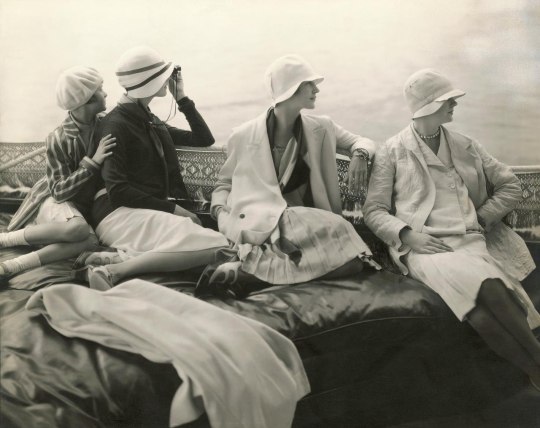
Women’s leisure wear in the 30s
by Edward J. Steichen (1879–1973)
On George Baher’s Yacht.1928, featuring June Cox, E. Vogt in Chanel and hat by Reboux, Lee Miller in Mae and Hattie Green and a scarf by Chanel, and Hanna-Lee Sherman.
Image and caption thanks to Lillicoco
#flappers#vintage fashion#another time another life#lifestyle#Women's style#vintage photography#Reboux#chanel#1930s style#1930s#girls just wanna have fun#seascape#edward steichen#Black and White
59 notes
·
View notes
Text

Balzac, The Silhouette—4 A.M.
Edward J. Steichen, 1908
12 notes
·
View notes
Photo
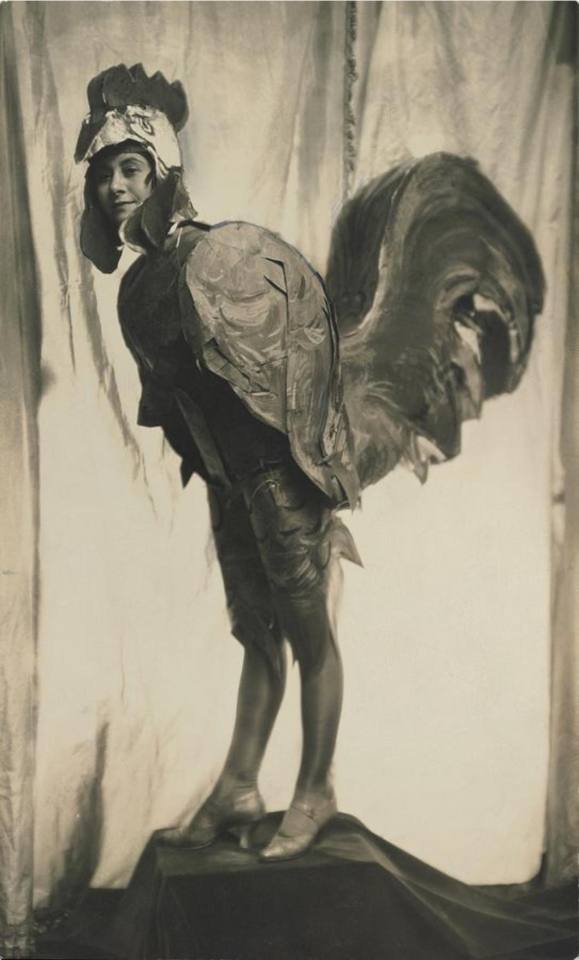
Edward J. Steichen :: Mrs. Leo Lentelli wearing a Chanticleer costume designed by Italian-American sculptor Leo Lentelli. Published in Vogue, April 1st, 1924.
52 notes
·
View notes